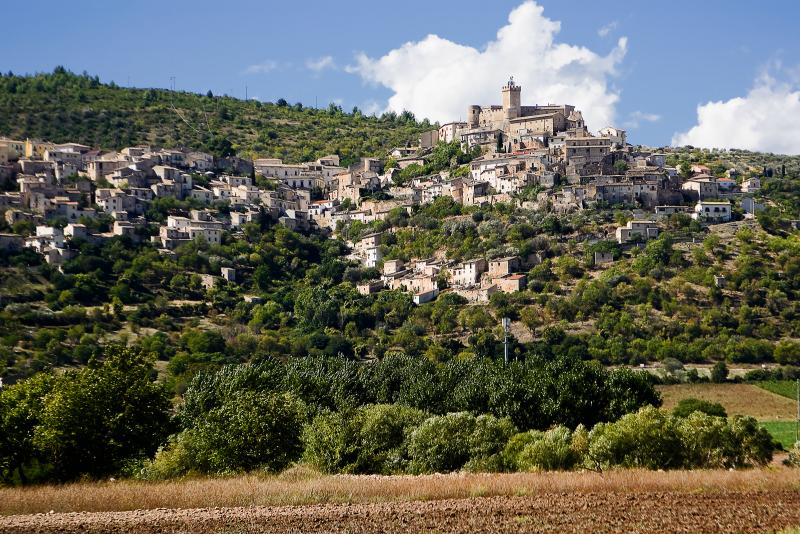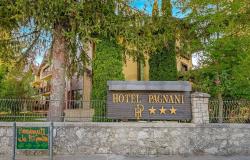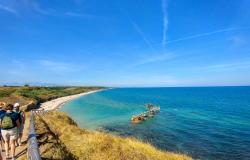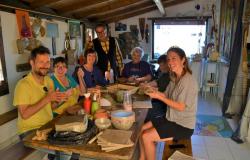Although, not everyone can or feels comfortable to travel at the moment, we can use this downtime to dream and plan our next perfect trip. Abruzzo with its dramatic mountains, picture-perfect medieval towns and long stretches of beautiful beaches has been winning the hearts of discerning travellers in search of lesser-known corners of Italy, away from maddening crowds. Brimming with history, the region has its share of centuries-old mysteries and legends. If you are the curious type, who takes delight in solving a few riddles while enjoying beautiful vistas, good food and wine, check out these mysterious places on your next visit to Abruzzo.
The Magic Square
In the valley below the picturesque medieval town of Capestrano stands a majestic church of San Pietro ad Oratorium. It is all that remains from a once powerful abbey built in the 8th century, which dominated the area and its important trading routes. Hidden by thick woods and easy to miss, the church doesn’t attract large numbers of visitors and is rarely open. On the left side of the entrance, there is a stone block, set upside down, with an inscription:
ROTAS
OPERA
TENET
AREPO
SATOR
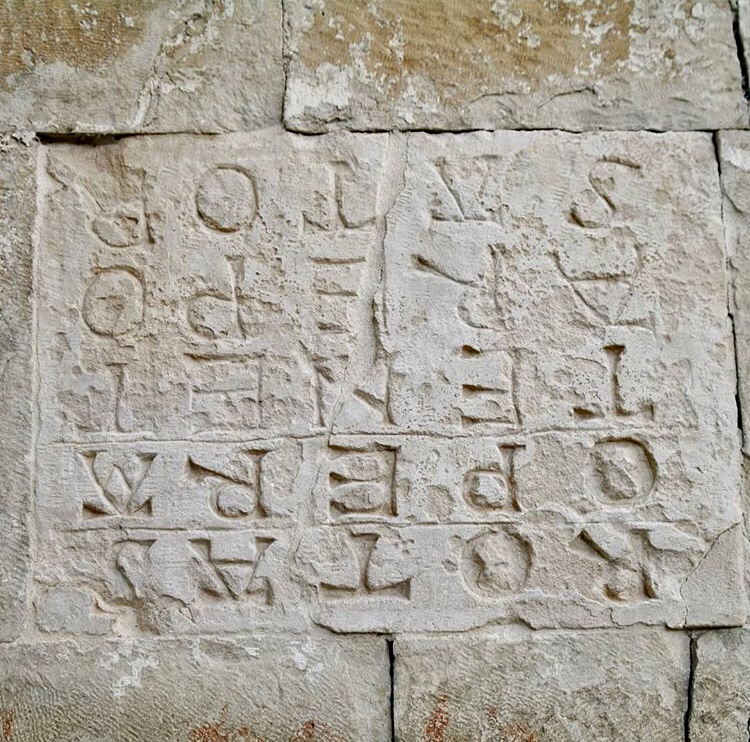
The words are carved in five rows and form a palindrome, so they read the same backwards and forwards, as well as up and down. This type of “Sator Squares”, as they are called, has been found in several locations across Europe and in Syria. Although many interpretations exist, their meaning is still unclear. Some historians say, the Sator Square was a covert early Christian symbol in the times of religious persecutions. Others refer to the palindrome’s use for magic spells against fires, fever and witchcraft. There are also theories about its connection to the Templars or Satan. In Abruzzo, another place exists where you can see the magic square: the 13th-century church of Santa Lucia in the small town of Magliano de’ Marsi. On the façade, beside the window, on the left, there is a beautiful carving of a winged monster. Under his belly, you’ll see (you might need to zoom in with your camera) the same enigmatic palindrome. Who knows if the mystery of the Sator Square will be solved one day?
Sirente Crater
A short drive from the village of Secinaro, the majestic Sirente mountain towers over a shallow seasonal lake beloved by local cows, who sip its muddy waters and bask in the sun around it. Bikers and hikers flock to the BBQ grills and picnic tables nearby on sunny days but very few know that this puddle is somewhat of a mystery.
The Sirente Crater, as the lake is known, was the subject of heated discussions in the scientific world some years ago. A number of experts believe that it is an impact crater created by a meteorite, which hit the plain around the 4th century. According to their theory, it was what Roman emperor Constantine interpreted as a sign from God in 312 AD and converted to Christianity.
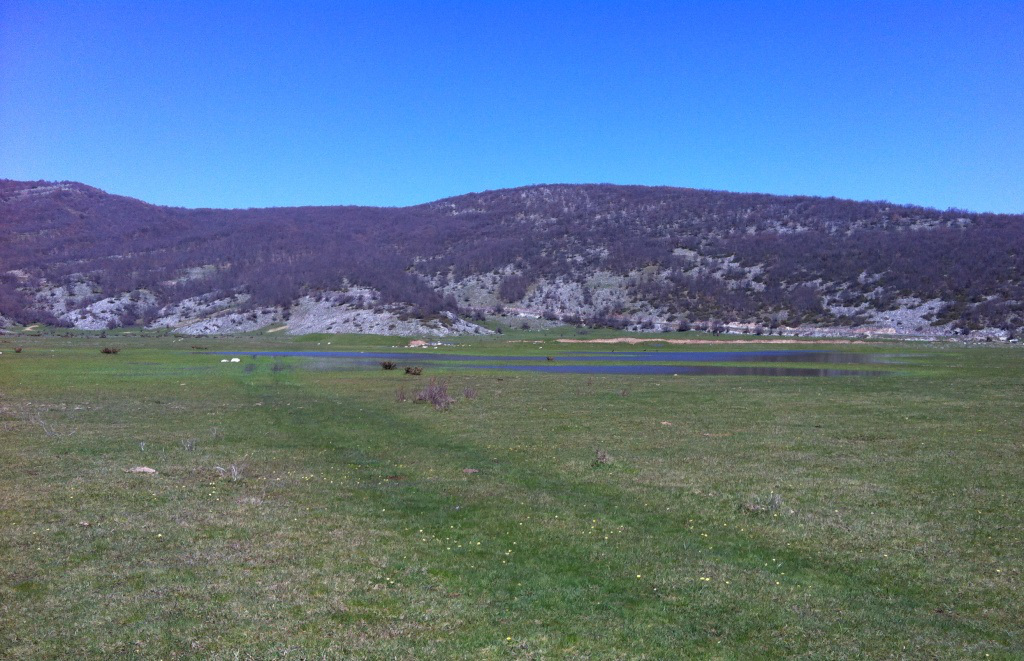
Local oral legends also tell a story of a star that outshone the sun and hit the Sirente mountain with a huge force causing fire and an earthquake. The National Geographic made a fascinating documentary, “Fireball of Christ”, trying to find the answer. If the legends are true, this unassuming little-known place holds a key to the event that changed the world’s history. If you are in the area and want to see the crater, enter “Cratere del Sirente” in Google maps to get there.
Pontius Pilate in Abruzzo
Pontius Pilate remains in history as the man, who crucified Jesus. It is unknown what became of the Roman prefect. Some say he committed suicide on Caligula’s orders, others think he went back to his hometown, the modern day Bisenti, in Abruzzo. Locals in Bisenti can even show you the house, where the notorious governor of Judea was born and, they believe, spent his last days. According to a local legend, on his return, Pilate was busy building a sophisticated water supply system for his town, which survived to these days.
Follow the signs to Fonte Vecchia to see the beautifully engineered tunnels and wells connected to a two-kilometre-long underground system, very similar to the one built in ancient Jerusalem. Along the water course there is a large house, which still retains features typical for ancient noble Roman dwellings. Two cisterns where fresh water was collected are still visible under the central court of the house.
Without a doubt, some important person lived here and had all that fresh water for personal use. Locals calls this building “Pilate’s House” and say that this is where the Roman prefect was born and lived after returning from Judea. The mysterious identity of the noble house dweller and creator of the water canals continues to tickle historians’ curiosity.
King’s hidden treasures
A local legend has it that in the 13th century Manfred, King of Sicily, hid a huge chest of copper, gold and silver coins in one of the karst caves in the Salinello Gorges, not far from his Castle Manfrino. The entrance to the cave is closed with an enormous rock and is guarded by a fairy dressed in white.
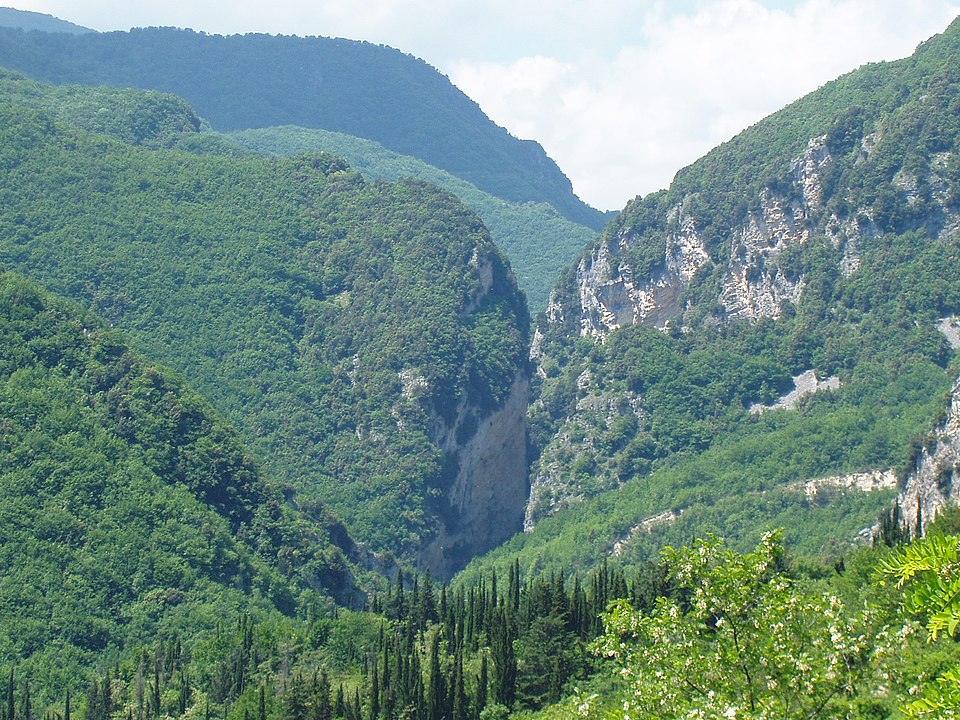
Whoever finds the treasure, must first take the copper coins and return after three years for the silver ones and, only after three more years, take the remaining gold coins. Locals will tell you that, over the centuries, a few people have lost their lives trying to take the golden coins first. The gigantic rock seals the cave’s entrance leaving the greedy treasure seekers inside to die.
The Salinello Gorges are dotted with caves. Pack a metal detector in your bag if you are planning to explore them. You never know what you will come across in this land of castles, kings and fairies.
